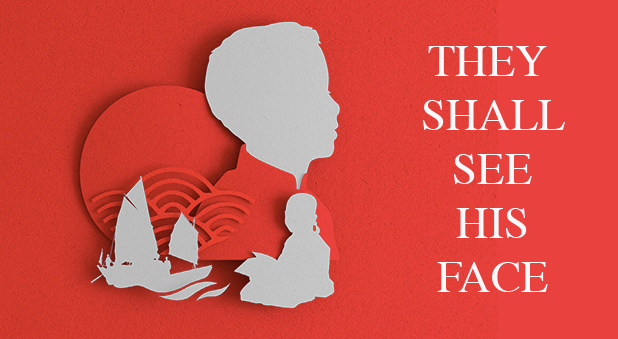They Shall See His Face: The Story of Amy Oxley Wilkinson and Her Visionary Blind School in China by Linda and Robert Banks
Sign up here for more reviews and recommendations.
If you go to Beijing and visit the main government hospital, you will see crosses carved on its stone entrance gates, a reminder of the hospital’s Christian origins. In many parts of the world hospitals, schools and caring institutions were founded by people motivated by the love of Christ. Such a one was Amy Oxley, whose story is the subject of this compelling book.
In the Chinese churches it is not uncommon to find "Bible women", who are local evangelists among the villages. They are usually better received than their male counterparts because their coming is not seen as a threat to the authority of the village leaders as the coming of male evangelists would be.
This trend was picked up by the early missionaries, most of whom were single women (one of these was Sophie Newton, whose story is told in a previous book by the same authors, View from the Faraway Pagoda).
Amy trained as a nurse, being especially drawn to children with special needs, whom she befriended as well as caring for their physical needs. She applied to and was accepted by the Church Missionary Society in 1892. She spent the next two years at the CMS training school, Marsden Training Home, and then a further two years doing obstetrics and midwifery to complete her nursing training.
It was during this time that the chilling news of the first missionaries to be martyred in Kuching was received, so those about to go to China had no illusions of the safety of their enterprise. Despite the tumultuous times of the Boxer Rebellion and the Nationalist Revolution, these men and women set out into this very uncertain world, trusting in God who had called them.
Amy began with a language tutor and four to five hours of daily private study. She was appointed to work in a dispensary at Lien Kong in Fujian province, where she says she saw "about a hundred patients in the first few weeks". She moved to permanent housing in Deng Doi and soon observed some of the region's pressing problems – opium addiction, infanticide, foot binding and lack of schooling.
During her first year in Deng Doi, Amy's eyes were opened to the possibility of a new work. I her own words she explains:
"In [my] homeland, l had passed the blind on the other side of the street, for I had no special interest in them. Now my heart was stirred to its depths on many occasions when blind children were brought to me in our dispensary... Going to a village one day, I stumbled across a helpless blind boy cowering in a ditch. He told me his father had wanted to kill him but seeing I was coming, had left him for me... to be blind is a terrible thing. To be blind of poor Chinese parentage is still more terrible."
The first Blind School began with one boy in Amy's own home. A major issue she had to confront was language – first, proficiency in the Foochow (Fuzhou) dialect, then learning written Chinese (it takes about 10,000 characters to read a newspaper!) and finally, and especially, inventing a Braille system to suit.
In Amy's own words, “God opened a door” in the form of a blind Scotsman at Amoy who taught her English Braille, from which she became the first to set down Chinese Braille from the Romanised form of the local Foochow dialect.
It was decided that henceforth Amy would be full-time in work with the Blind School. She changed the name from the prosaic Boys Blind School to the evocative evangelistic Chinese name of “Soul-lighted school”. She rigged up an exercise room with long wires, which enabled the boys to run full tilt the length of the room – maybe the first time some of these children could enjoy any exercise.
The hospital had now a new superintendent, Dr George Wilkinson. The two worked well together and in 1902 George and Amy were married. The advent of World War I prolonged a family furlough so they and their two children remained in England and settled there.
Now, there are many Chinese men and women (the Blind School was soon opened to girls as well as boys) who enjoy a fulfilled adult life, thanks to Amy's work. The school, which these days has more than 80 pupils, is still carrying on its work, though sadly it is no longer Christian.
This book is an inspiration to us all, wherever we are, to take up the opportunities God gives us and, in his strength, to have the ability and ingenuity to fulfil his role for each of us.














